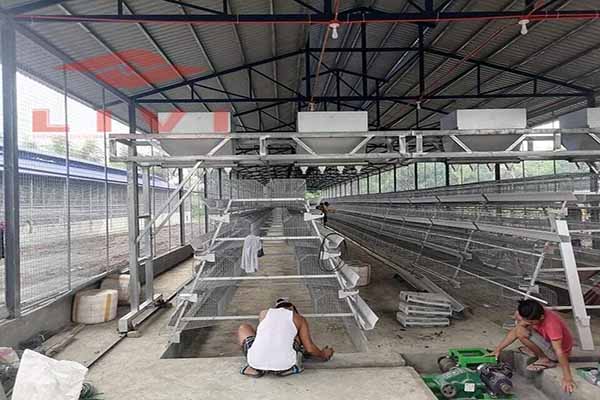Uganda Chicken Farm Automation: The Efficiency of Automated Egg Collection Machines
Time : 2025-06-28
Automating the egg collection process in chicken farms is a revolutionary step towards modernizing poultry production. In Uganda, where the poultry industry is rapidly growing, implementing automated egg collection machines has become a necessity to enhance efficiency and productivity. This article delves into the benefits of using automated egg collection machines in Uganda’s chicken farms and how they contribute to overall efficiency.
Introduction to Automated Egg Collection Machines
Automated egg collection machines are sophisticated devices designed to collect eggs from chicken farms with precision and efficiency. These machines are equipped with sensors, conveyors, and sorting systems that enable them to detect, collect, and sort eggs as they are laid. The use of such machines has become increasingly popular in large-scale poultry operations worldwide, and Uganda is no exception.
The Need for Automation in Uganda’s Chicken Farms
1. Growth of the Poultry Industry
Uganda’s poultry industry has seen significant growth over the past decade, with the demand for eggs and meat increasing steadily. This growth has necessitated the adoption of advanced technologies to meet the rising production demands.
2. Labor Challenges
The manual collection of eggs is labor-intensive and prone to errors. In Uganda, where labor costs are rising, automating the egg collection process can help reduce dependency on human labor and lower operational costs.
3. Egg Quality and Safety
Manual collection can lead to damaged eggs and increased risk of contamination. Automated machines ensure that eggs are collected in a hygienic environment, minimizing the risk of spoilage and improving egg quality.
The Efficiency of Automated Egg Collection Machines
1. Consistent Egg Collection
Automated egg collection machines operate 24/7, ensuring consistent egg collection throughout the day. This eliminates the need for manual labor during peak laying times and ensures that no eggs are left behind.
2. Time and Cost Savings
The automation of egg collection significantly reduces the time required for this task. This allows farm workers to focus on other critical activities, such as feeding, cleaning, and monitoring the health of the chickens. Additionally, the reduction in labor costs is a substantial benefit for chicken farmers.
3. Improved Egg Quality
Automated machines are designed to gently handle eggs, reducing the risk of damage. This ensures that the eggs reach the market in the best possible condition, enhancing the farm’s reputation and profitability.
4. Health and Safety
By minimizing human contact with eggs, automated machines help reduce the risk of disease transmission. This is particularly important in Uganda, where biosecurity is a critical concern in the poultry industry.
Case Studies: Success Stories in Uganda
Several chicken farms in Uganda have successfully implemented automated egg collection machines. Here are a couple of case studies showcasing the benefits:
Case Study 1: Uganda Poultry Limited
Uganda Poultry Limited, one of the largest poultry companies in the country, installed an automated egg collection system. The company reported a 30% increase in egg collection efficiency and a significant reduction in labor costs.
Case Study 2: Greenfields Farms
Greenfields Farms, a medium-sized poultry farm, adopted an automated egg collection machine to improve their operations. The farm saw a 20% increase in egg production and a reduction in egg damage by 50%.
Conclusion
The integration of automated egg collection machines in Uganda’s chicken farms has proven to be a game-changer for the poultry industry. The efficiency, cost savings, and improved egg quality provided by these machines make them an indispensable tool for modern poultry farmers. As the industry continues to grow, it is imperative for chicken farmers in Uganda to embrace automation to stay competitive and meet the increasing demand for eggs.
Tags
, , , , , , , , , 











